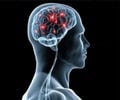New protein biomarker for schizophrenia has been detected in human hair. The level of the protein is elevated in the hair follicles in schizophrenic patients. It can act as an early biomarker of schizophrenia.
- A new protein biomarker for schizophrenia has been detected in human hair
- The level of this protein biomarker called MPST (3-mercaptopyruvate sulfurtransferase) is elevated in the hair follicles of patients with schizophrenia
- This biomarker can be used for diagnosis of schizophrenia much earlier than other conventional methods
The study, published in the journal EMBO Molecular Medicine, was led by Dr. Takeo Yoshikawa, MD, PhD, who is the Team Leader of the Laboratory of Molecular Psychiatry at the RIKEN Center for Brain Science in Tokyo, Japan.
Read More..
What are the Advantages of Biomarkers for Schizophrenia Diagnosis?
A biomarker for any disease, including psychiatric disorders such as schizophrenia, makes it much easier to diagnose the disease at an early stage. In the case of schizophrenia, it has been known for over three decades that an abnormal ‘startle response’ is a good clinical indicator of the condition. Interestingly, this startle response is not so pronounced in normal individuals.The startle response generally doesn’t occur if a loud sound is preceded by a weaker sound, termed as a ‘prepulse’. This phenomenon is known as ‘prepulse inhibition (PPI)’ as the prepulse dampens the louder sound that follows, thereby inhibiting the startle response. However, in case of schizophrenic patients, PPI is decreased, as a result of which the startle response is not dampened. Hence, these patients become startled upon exposure to a sudden loud sound. This PPI test is a good behavioral diagnostic marker of schizophrenia, which is conventionally used in clinical psychiatric practice.
How was the Research Conducted?
The scientists at the RIKEN Center for Brain Science conducted the research in several stages, with each preceding stage influencing subsequent stages. These stages of the research are briefly described below:Mice Studies
- Differential protein expression in different strains of mice was studied to identify those that were susceptible to extremely low or extremely high PPI
- A protein enzyme called MPST (3-mercaptopyruvate sulfurtransferase) was studied that is responsible for the production of hydrogen sulfide
- MPST was expressed at significantly higher levels in the brains of mice with low PPI than in those with high PPI
- Measuring the levels of hydrogen sulfide in the brains of the mice revealed that it was higher in the low-PPI mice
- In order to verify that MPST expression was responsible for the generation of hydrogen sulfide, MPST gene knockouts of low-PPI mice were created
- It was revealed that PPI was higher in the MPST gene knockout mice than in regular low-PPI mice
- This indicated that reducing MPST expression enabled the mice to become more normal
Human Studies
- Examination of the post-mortem brains of schizophrenic patients revealed that MPST expression was higher in these brains than in those from people without schizophrenia
- MPST levels in schizophrenic patient’s brains were well correlated with the severity of symptoms
- Feasibility of using MPST as a biomarker for schizophrenia was investigated by examining the hair follicles of over 150 schizophrenic patients
- MPST mRNA (messenger ribonucleic acid) expression was significantly higher in the hair follicles of schizophrenic patients than in normal individuals
- This indicated that MPST levels in hair follicles could be an excellent early biomarker of schizophrenia, much before the appearance of clinical symptoms
- Elevated MPST levels were well correlated with excessive production of hydrogen sulfide, leading to ‘sulfide stress’ induced schizophrenia
Implications & Future Prospects
Currently available treatments for schizophrenia use antipsychotic drugs that are antagonists of the serotonin-dopamine system in the brain. However, most of these drugs have become ineffective and are also associated with a large number of side effects. This has led to stagnation in the psychiatric drug development pipeline. This new study has the potential to bring about a paradigm shift in drug development.“A new paradigm is needed for the development of novel drugs,” Yoshikawa explains. “Currently, about 30 percent of patients with schizophrenia are resistant to dopamine D2-receptor antagonist therapy. Our results provide a new principle or paradigm for designing drugs, and we are currently testing whether inhibiting the synthesis of hydrogen sulfide can alleviate symptoms in mouse models of schizophrenia.”
Reference:
- Excess hydrogen sulfide and polysulfides production underlies a schizophrenia pathophysiology - (https://www.embopress.org/doi/full/10.15252/emmm.201910695)
Source-Medindia















